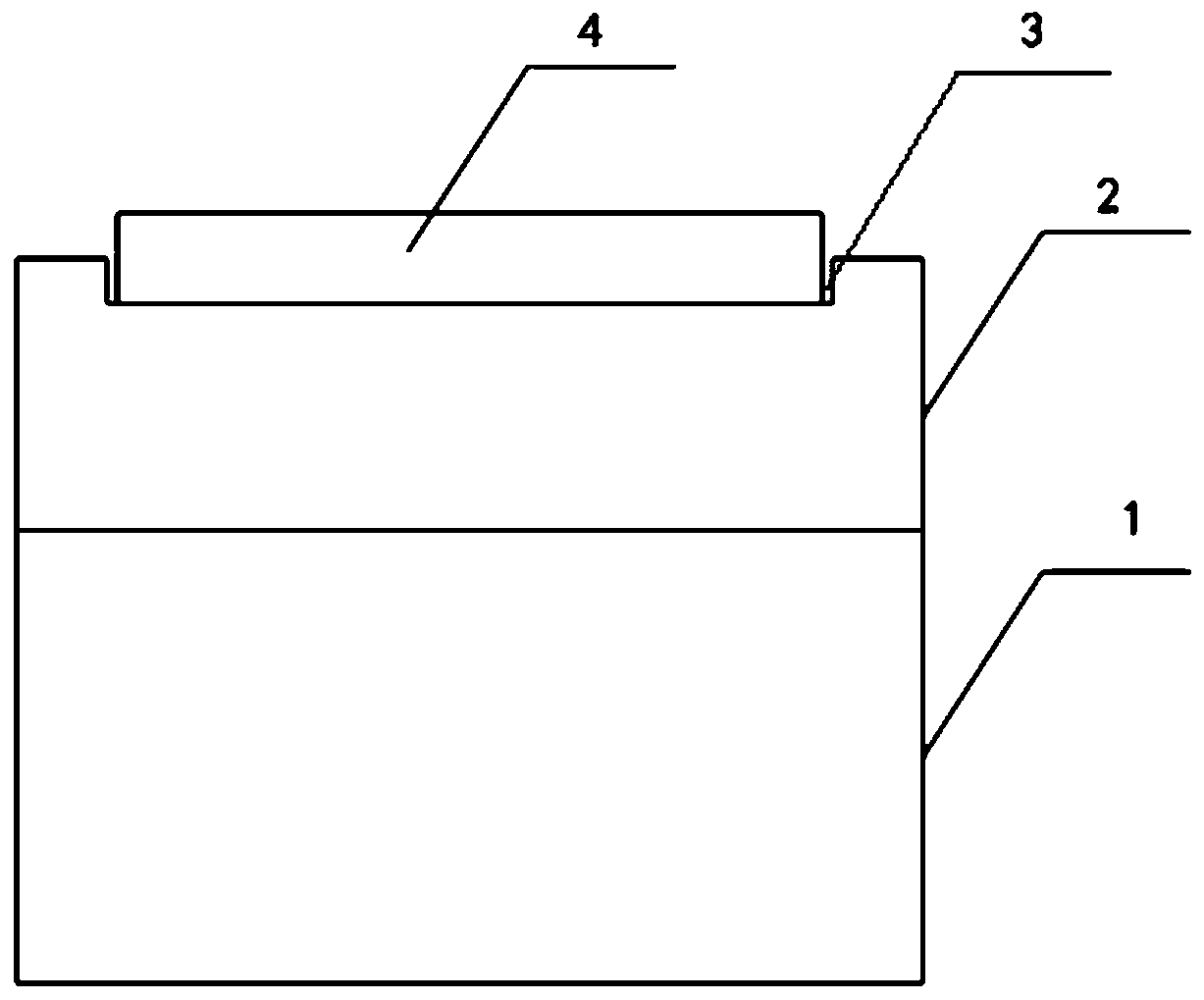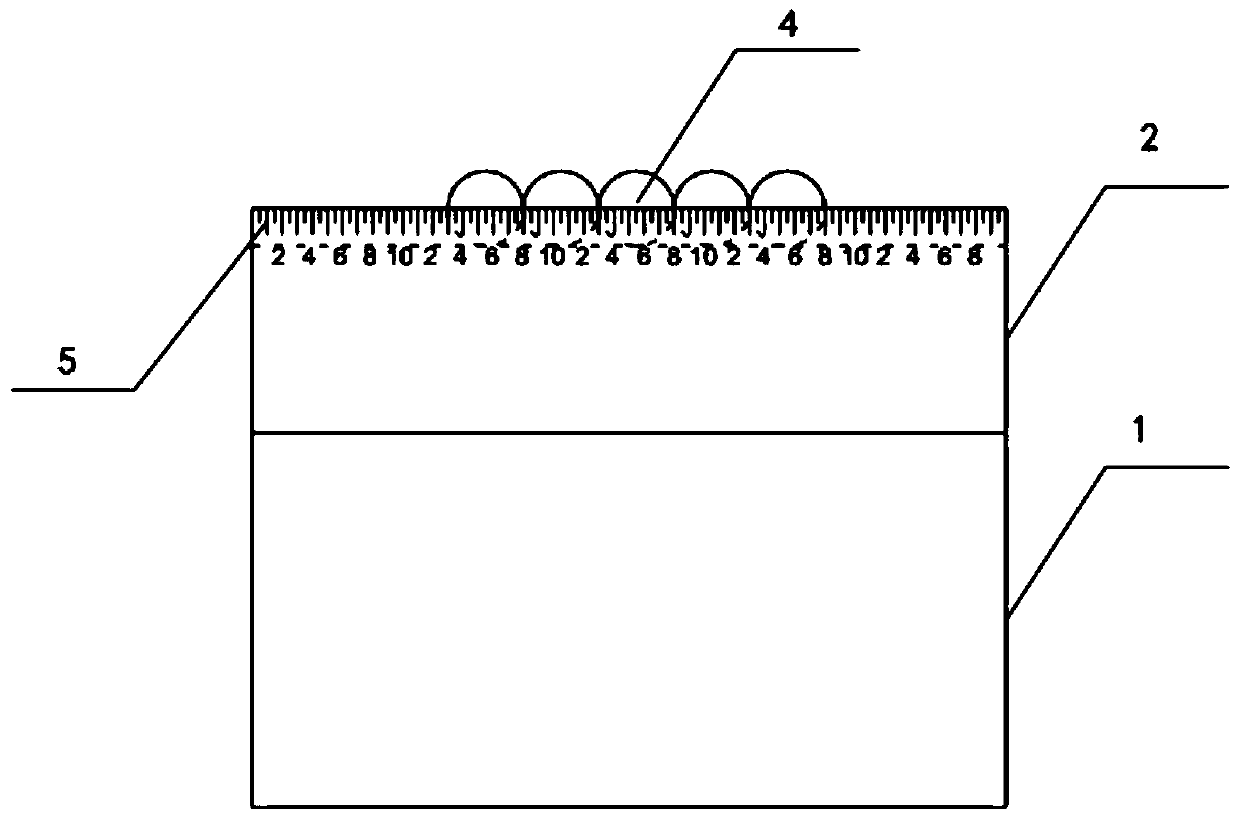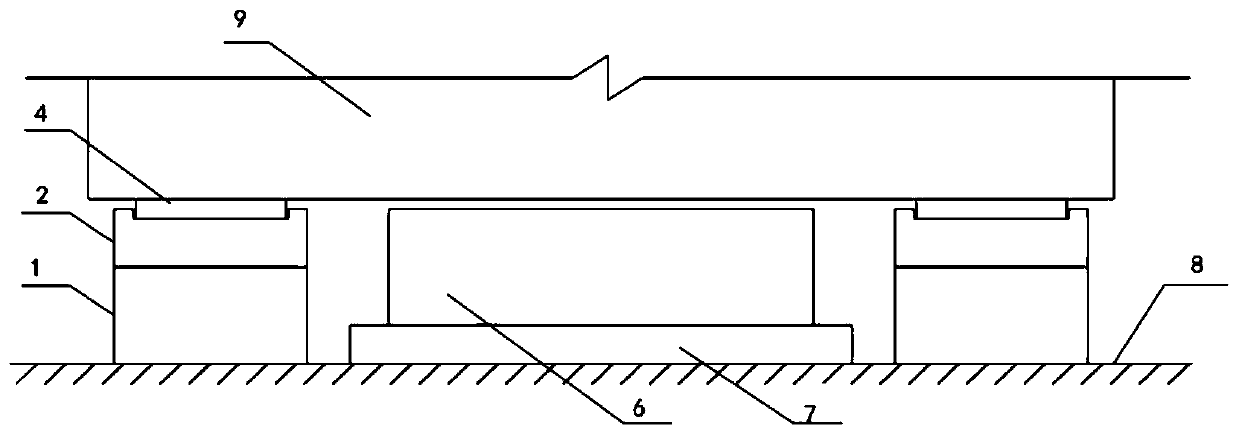Falling beam construction beam end sliding auxiliary device and use method
An auxiliary device and beam drop technology, which is applied in the direction of bridges, bridge materials, bridge construction, etc., can solve problems affecting the overall quality of the structure, shear damage of beam end supports, etc., to assist in checking the safety and quality of beam drop, and improve Construction efficiency and the effect of saving construction time
- Summary
- Abstract
- Description
- Claims
- Application Information
AI Technical Summary
Problems solved by technology
Method used
Image
Examples
Embodiment 2
[0041] This embodiment discloses a method of using a beam end sliding auxiliary device for falling beam construction: Figure 3-4 As shown, the support block 7 is poured on the abutment 8 at the beam end in advance, and the beam end support is fixed on the support block after the support block reaches the set strength. The beam end sliding auxiliary device for the falling beam construction The method of use includes the following specific steps:
[0042] Step 1: Use sulfur mortar to pour pad stones on the abutment positions on both sides of the beam end support. When pouring, pre-embed resistance wires inside the pad stone, and the pad stones on both sides of the beam end support are symmetrical to the beam end support After the pad stone reaches the set strength, fix the support on the top surface of the pad stone.
[0043]Step 2: Apply engine oil evenly on the two side groove surfaces of the support groove, evenly arrange the four rollers in the middle of the groove, set th...
PUM
 Login to View More
Login to View More Abstract
Description
Claims
Application Information
 Login to View More
Login to View More - R&D
- Intellectual Property
- Life Sciences
- Materials
- Tech Scout
- Unparalleled Data Quality
- Higher Quality Content
- 60% Fewer Hallucinations
Browse by: Latest US Patents, China's latest patents, Technical Efficacy Thesaurus, Application Domain, Technology Topic, Popular Technical Reports.
© 2025 PatSnap. All rights reserved.Legal|Privacy policy|Modern Slavery Act Transparency Statement|Sitemap|About US| Contact US: help@patsnap.com



